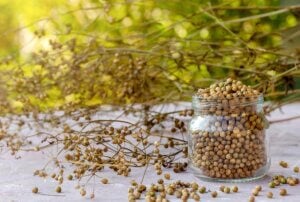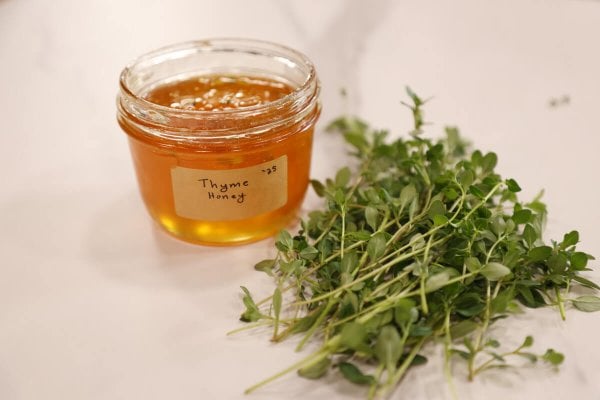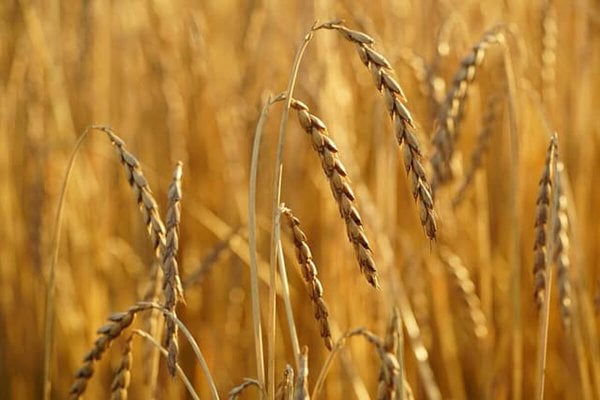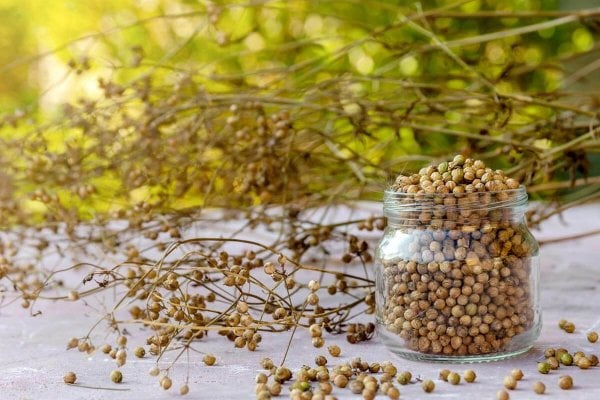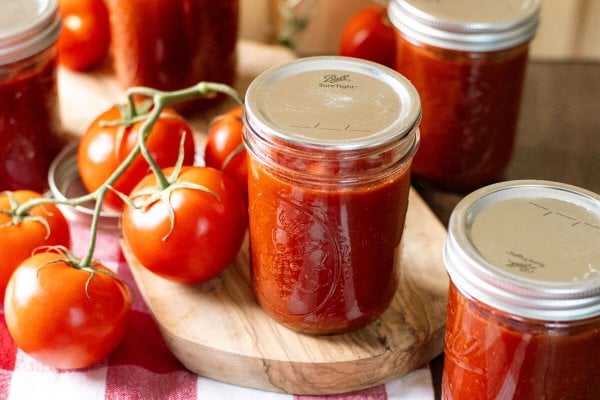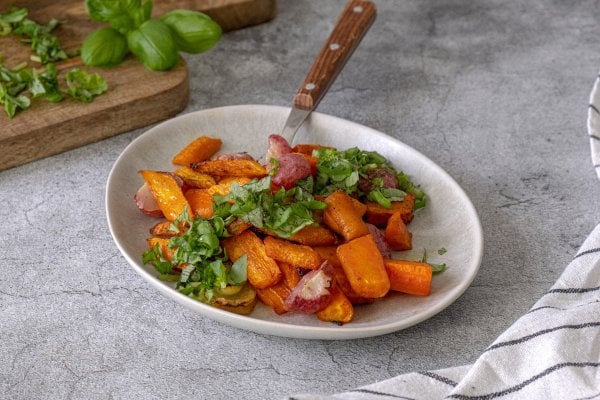We live in beautiful North Idaho. Many people think Idaho’s fame lies in its potatoes, but Idaho is one of the leading producers of hops in America. Hops are grown and produced abundantly in the area we homestead.

You can grow the hops plant from seed or rhizome for more reasons than making beer. Naturally, we grow hops to use for their herbal properties. Read on to learn more about this beneficial herb.
Why I Love Growing Hops
When designing an old-fashioned cottage garden, we wanted to include medicinal herbs for daily use.
Over the years, we built up our knowledge of medicinal herbs and their uses to boost the immune system naturally and treat common ailments by using herbal medicine safely at home. Now, we even use medicinal herbs on farm animals.
Many people think beer is the only thing you can make with hops, which we hope to do someday, but we incorporate hops into our lives in various other ways.
We love the seasonal shade they bring to our front porch and the medicinal benefits of hops. We enjoy making hops tea and tinctures and use hops topically for pain (Source), like a muscle relaxer or to relieve a headache.
It’s important to note that I am not a certified medical practitioner or accredited veterinarian. This post is not intended to diagnose or treat but is for informational purposes only. Please contact your medical care professional before introducing new herbal remedies into your or your animal’s wellness routine.

What Are Hops
The hop plant (Humulus lupulus) is a climbing plant with a beautiful bright green color. The plants produce green cone-shaped flowers known as hops. The Anglo-Saxon term for hops is happan, which literally means to climb.
More and more people are growing hops at home. This herbaceous perennial plant grows very quickly and can vine to provide a beautiful shade element to your patio, porch, or garden area. With sun and rich soil, anyone can easily grow hops.
The well-known bitter flavor in beer comes from the hops but is commonly mistaken for a grain, not a flower. So if you need to eat gluten-free, you can still eat hops.
Hops contain a potent phytoestrogen, which mimics estrogen in the body. So, if you need to stay away from extra estrogen in your diet, avoid hops. (Source)

Health Benefits of the Hops Plant
You may be surprised at how many ways to use hops other than making beer:
- Sleepiness – Hops contain a chemical that can cause sleepiness by influencing serotonin in the body. You can combine hops with other sleep aids like the valerian herb to help you fall asleep more easily and stay asleep longer. (Source)
- Restlessness – Along with being a sleep aid, hops can help combat restlessness at night.
- Anxiety – Hops help reduce anxiety with its sedative qualities. (Source)
- Irritability – As hops calm and reduce anxiety, it also helps release tension that leads to irritability.
- Digestion – Hops accelerate the body’s metabolism which aids digestion. You can jump-start digestion before a meal by drinking a small amount as an aperitif. (Source)
- Pain – Ingesting hops can help with pain relief. Some people drink hop tea for its analgesic qualities to help with chronic pain.
- Colds and Flu – If you get sick, drink hops for quick relief from a cold and for its antiviral and antibacterial properties. (Source)
- Topical Care – Hops can improve the quality of your skin with its antioxidant and anti-inflammatory properties. (Source) Rinsing your hair in hops tea gives your hair a beautiful shine and reduces dandruff. You can also mix hops into a salve to rub on sore muscles for relaxation and pain relief.
- Estrogen Replacement – Some women use hops as an estrogen replacement.
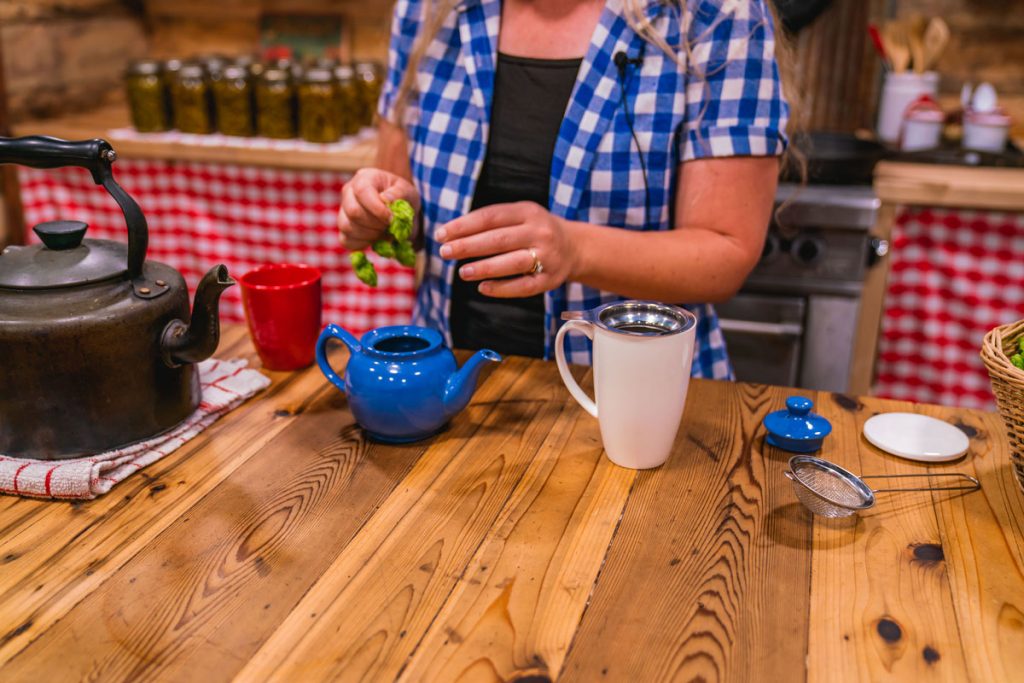
Ways to Prepare Hops
Don’t want to wait until your harvest to get started using hops? We value supporting trustworthy homesteaders that provide quality products. Farmhouse Teas is a family-owned and operated farm that fits these criteria.
They carry dried hops flowers among all my other favorite medicinal and culinary herbs that I haven’t put up yet.
- Hop Tea – Steep fresh or dried hops in hot water (not boiling). You can drink hop tea before bedtime to help you relax. Or use hop tea to rinse your hair to give it a nice sheen.
- Hop Honey – Steep hops in honey and use it in tea or eat it by the spoonful. This is another way to gain the benefits of hops.
- Hop Tincture, Cream, or Salve – Learn how to make your own herbal tinctures and include hops in the recipe. A salve containing hops can be rubbed on sore muscles to relieve pain, reduce swelling, and help relax muscles. Add hops to facial cream. The antioxidants in hops fight against free radicals and puffiness to aid in healthy, glowing skin.
- Hop Capsule – If you don’t enjoy the taste of hops, learn how to make your own herb capsules. Just dry or dehydrate your hops, blend them into a powder, and fill capsules with the hops powder.

Growing
Varieties
Choosing a variety of hops to grow may prove overwhelming since hundreds of varieties of hops exist. We suggest doing ample research to choose the best plant varieties for you, depending on your climate, taste preferences, and space.
Take the time to learn how to start seeds indoors and when to start seeds indoors, as well as how to read seed packets.
We grow Hallertau hops. Here are a few common hop plants that grow well in the United States.
- Hallertau Hops – These aromatic hops originate from Germany with floral and spicy flavor notes. It tastes mild and not too bitter. Beer crafters use it to make pilsners, pale ales, wheat beers, and American lagers. Hallertau hops are widely grown in the United States, Belgium, and Germany.
- Cascade Hops – Probably the most popular variety, Cascade hops boast flavor notes of floral, citrus, and grapefruit. It originated in the United States. They are easy to grow, ripen early, and are very hardy.
- Willamette – This disease-resistant hop variety derives from English fuggle hops. It tastes floral, spicy, and herbaceous and is used for its aroma, not bitterness.
- Nugget – This disease-resistant hop plant became popular for its bittering hops.
- Galena – These hops grow well in just about any climate and were created in Idaho. This neutral hop goes well in any type of beer.

Planting
- Planting From Seed – Planting hops from seed takes great dedication as it takes a whole year for the seedling to grow a developed root system, so it will end up taking over two years for a harvest. In addition, the hop plant can either be male or female. The male hop plant does not produce flowers. The seeds must be cold-stratified before planting. Cold stratification means putting the hop seeds in a plastic bag with damp sand and keeping them cold at 41°F for 1 to 3 months before planting. Plant the seeds in rich soil and keep the seeds moist. It will take 30 to 40 days for the seeds to germinate. Homesteading Hack: Growing hops from seed is so involved that most people purchase hop rhizomes when starting hops in the home garden.
- Planting From Rhizomes – This is the preferred method. We plant our hops from rhizomes and root cuttings from established female plants. You can plant rhizomes horizontally or vertically, about an inch to two inches underneath the soil. Homesteading Hack: Dig up your hops rhizomes in the spring as they first emerge from the ground, cut off pieces with sprouts emerging from them and share them with your friends and neighbors.
- Soil – Hops prefer rich soil with plenty of organic matter. Regularly using homemade compost to keep your soil rich and fertile is ideal.
- Water – Hops require moist soil after planting. Use a good garden watering strategy for best practices.
- Sun – Hops like full sun, meaning they will need at least six hours of direct sunlight daily.
- Companion Planting – If you are companion planting in the vegetable garden, you can plant cilantro/coriander, marigolds, yarrow, anise, and plant chives in the same area as hops.
- Space – Give hop plants plenty of space. Hops growers recommend anywhere from 24 inches to 7 feet apart. Mature plants grow up to 20 feet high.

Growing
- Trellis – Once the hops plant begins to grow and become established, provide a trellis or something to climb on. Make your trellis at least 15 feet tall. Remember, the hop plant comes back each year since it is a perennial. In fact, it takes a few years for it to reach its full potential.
- Water – Keep your hop plants well watered, especially in the first stages of growth. As the plants become established, do not overwater as they don’t like soggy roots. You can let the soil dry out a little between waterings, but don’t let it get too dry.
- Training – Hops bines (yes, I do mean bines) will begin growing along the ground. As they become long enough, wrap them (clockwise in the northern hemisphere, counter-clockwise in the southern hemisphere) around your trellis. Trim any extra shoots that grow up to prevent overcrowding and unwanted hop production.
- Disease and Pests – Sometimes hop plants get powdery downy mildew on them. If you see this, clip off the leaves with the powdery mildew and get rid of it. Same with aphids, cut away any leaves with aphids and treat the plants for aphids naturally. Learning how to attract pollinators to your garden (such as ladybugs) can help with aphids.
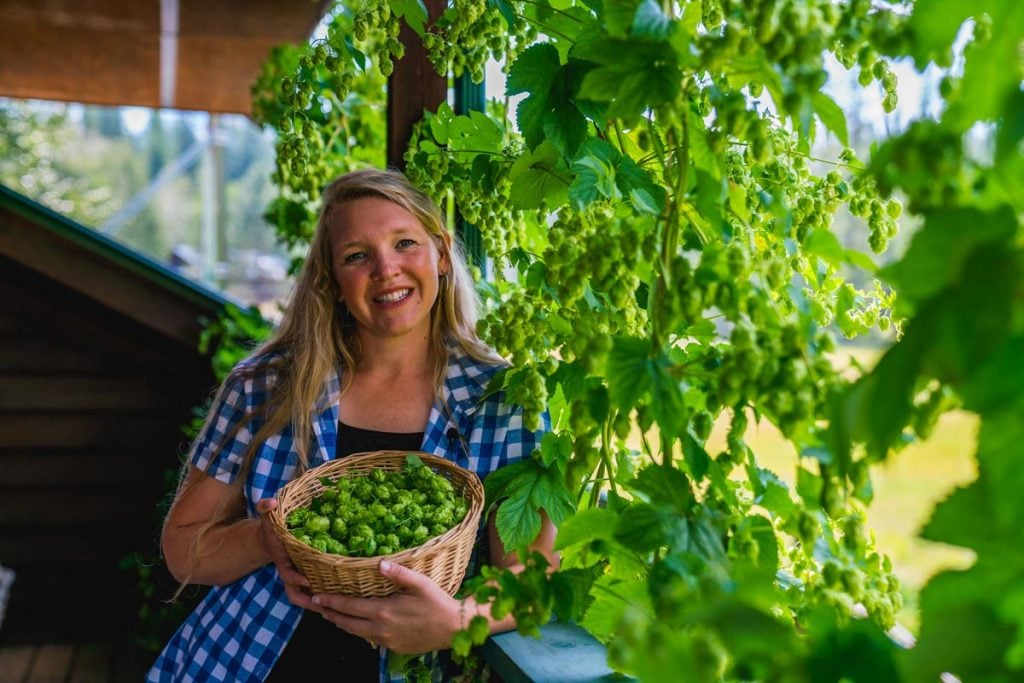
Harvesting
- Mature Cones – Examine the hops flower to gauge if it grew to maturity. A mature hops flower will feel dry and almost papery. The inside will look yellow and have a pleasant hops smell. When you squeeze the green cones, they will feel like they are starting to dry out.
- When to Harvest – You want to harvest hops at a very specific time. Wait to harvest until the strobiles mature and contain pollen, but do not wait too long before they open and drop or lose their pollen. The pollen is what contains medicinal properties and flavor. Hops are usually ready to harvest at the end of summer.
- How to Harvest – Pick the mature cone flowers off the hop plant. You can do this over several days to ensure that you are picking the mature flowers on the plant.
- After Harvest – After the harvest, cut down the hops vines. Leave about two feet of the plant to be ready for the next growing season.
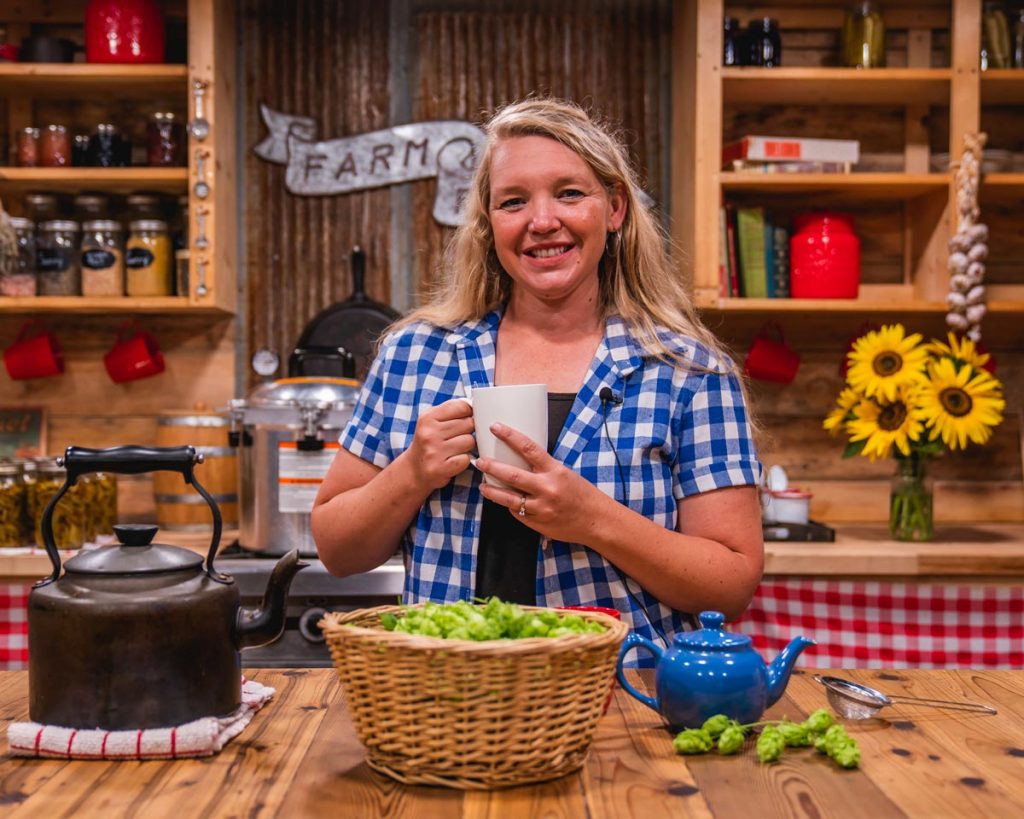
Preserving
You can dry your harvested hops to use throughout the winter. Learn how to dry fresh herbs. Hops dry best and retain the most nutrients when dried at very low heat.
For this reason, many people dry hops on screens in the summer heat. If you use a dehydrator, make sure the temperature never exceeds 140°F. Drying under 125°F is best. I use the Excalibur Dehydrator because it accommodates these temperatures.
You can preserve hops in a freeze-dryer as well. However, we prefer to just harvest enough hops for the year. We recommend drying your hops. But do your research to learn the difference between freeze-drying and dehydrating.
Dried and freeze-dried hop cones are easily reconstituted to make whatever recipe you want. Store hops in sealed jars or plastic bags. Have Fun!
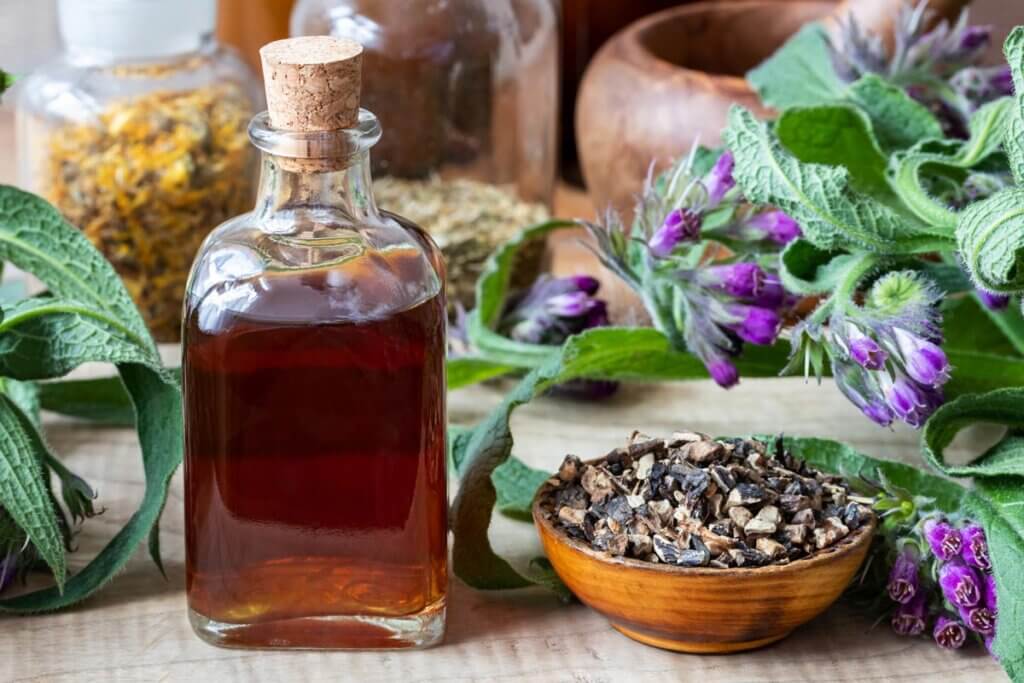
Using Herbal Medicine
Hops make a great beginner herb to grow, harvest, preserve, and use for medicinal purposes.
If you’d like to learn more about herbalism, check out my Herbal Medicine Cabinet: Colds and Flu Class to gain the support you need as you grow in your traditional skills and homesteading knowledge.
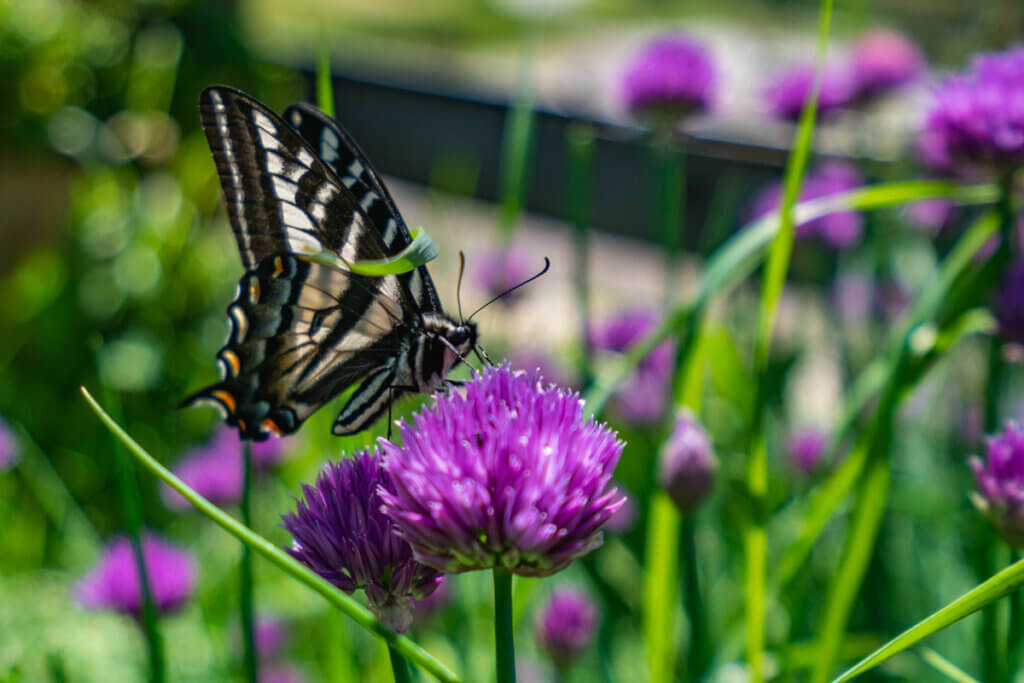
Other Articles You May Enjoy
- Designing an Old Fashioned Cottage Garden
- Using Medicinal Herbs on Farm Animals
- Medicinal Herbs and Their Uses
- Home Remedies for Cough (Baby and Toddlers & Adults)
- DIY Arnica Oil
- Dandelion Uses for the Homestead
- Hop Tea + Medicinal Benefits Of Hops
- What to do with Rose Petals (Medicinal Uses + DIY Rose Face Wash)




